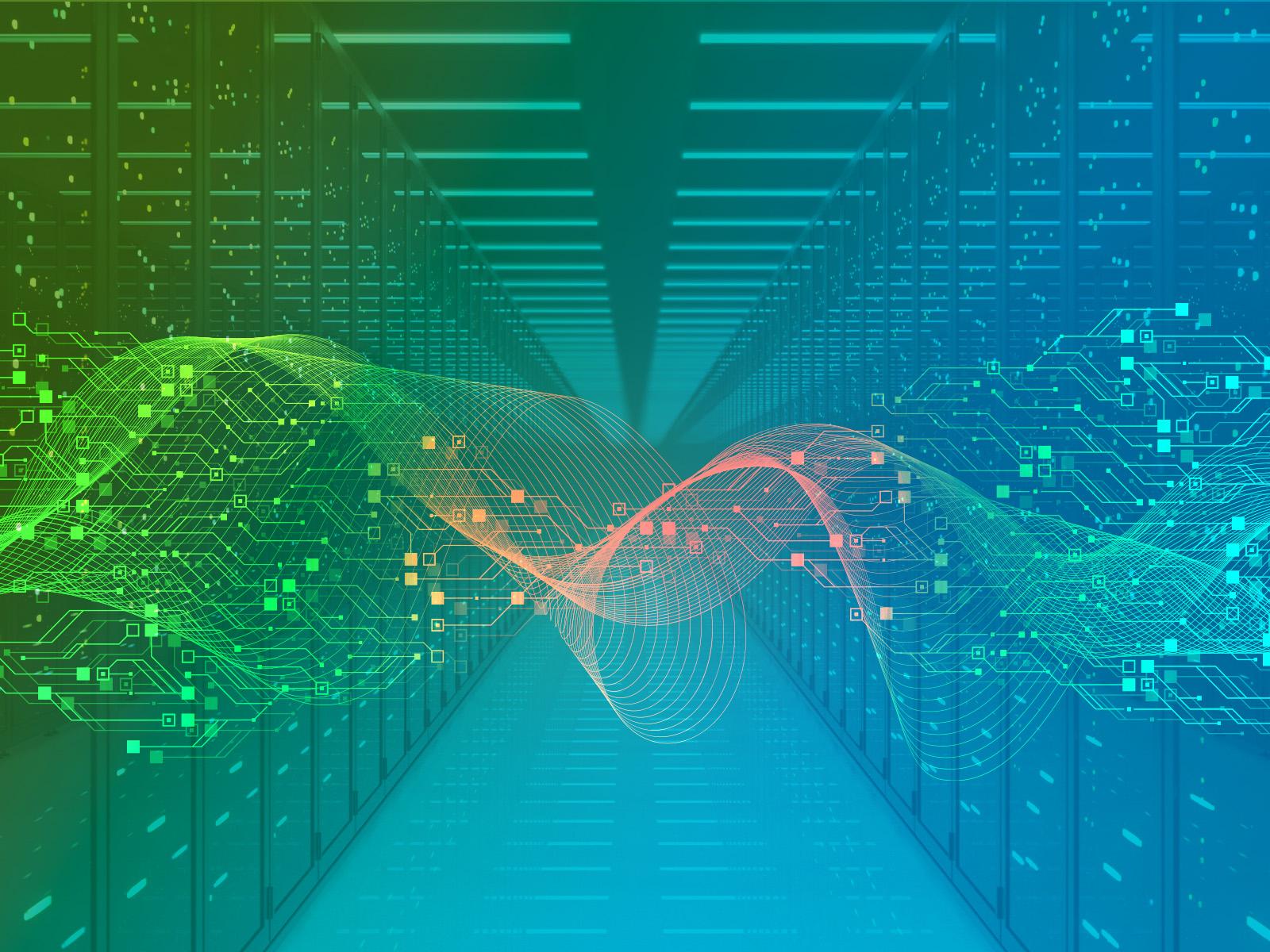High-Performance AI Data Centers
High-Performance AI Data Centers
Unleashing U.S. global dominance in AI through more efficient data centers

(Graphic by Kelly Machart | Pacific Northwest National Laboratory)
High-Performance AI Data Centers
Unleashing U.S. global dominance in AI through more efficient data centers

(Graphic by Kelly Machart | Pacific Northwest National Laboratory)
While data centers have been around for decades, those designed to support computing infrastructure for artificial intelligence (AI) require significantly more advanced hardware, high-performance computing capabilities, and robust data management. AI data centers must handle increased processing demands, including AI training spikes, which demand much more power from the grid or micro-grid they are attached to.
From 2017 to 2023, data centers significantly boosted their annual contribution to the U.S. gross domestic product, from $355 billion to $727 billion, fueled by electricity-intensive computing equipment and vital cooling systems that drive operational efficiency. From 2019 to 2023, new data centers, especially computationally intensive generative AI data centers, led to a 10 percent growth in electricity demand across the 10 states with the highest demand growth.
Pacific Northwest National Laboratory (PNNL) is committed to helping unleash U.S. global dominance in AI by improving the energy performance of the nation’s data centers.
PNNL is using its decades of experience in building technologies and controls research, development, and validation to address the growing demands of AI data centers on the nation’s electricity infrastructure.
PNNL will convene and collaborate with the American Society of Heating, Refrigerating and Air-Conditioning Engineers (ASHRAE), the National Electrical Manufacturers Association, and commercial partners to develop a best practices framework for the efficient design, commissioning, retrofit, and operation of AI data centers. The framework will address all aspects of energy source, energy use, and water use in data center facilities, including electricity generation and opportunities for waste heat reuse, and make recommendations based on facility climate zone and load density. The goal is to enable the country to grow its data center capacity while lowering impacts on the power grid by improving facility reliability, safety, and performance. This framework will leverage the previous work of ANSI/ASHRAE Standard 90.4 2022 (Energy Standard for Data Centers).
Bing Liu, ASHRAE Fellow
bing.liu@pnnl.gov